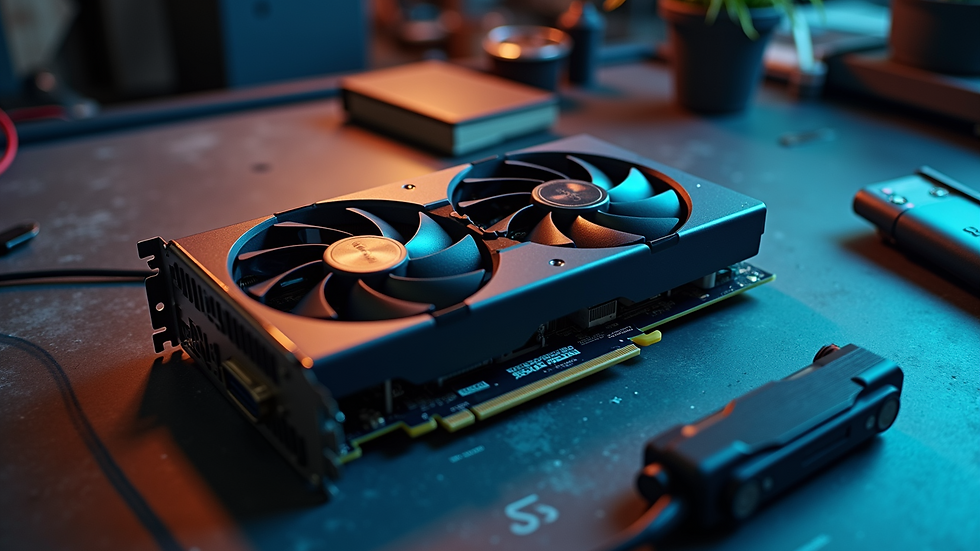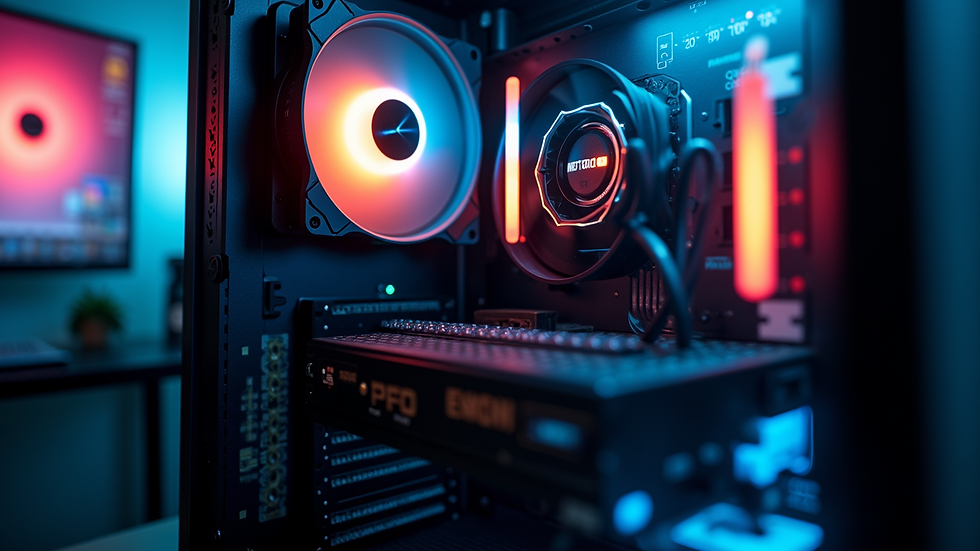How to Ensure Your Gaming PC Components Work Together
- CS UK

- Jul 21
- 3 min read
Building a gaming PC can be an exciting but daunting task. The performance and efficiency of your rig depend heavily on the compatibility of its components. Ensuring that your graphics card, motherboard, CPU, RAM, and power supply work together seamlessly is the key to building a gaming machine that meets your needs. In this guide, we’ll explore how to ensure your gaming PC components work together harmoniously.
Understanding PC Compatibility
Before diving into the specifics, it's essential to grasp the concept of PC compatibility. PC compatibility refers to the ability of different hardware components to function together effectively. Every component has specific requirements and standards, so you must choose parts that are not only high-quality but also compatible with one another.
For instance, if you buy a powerful CPU, you'll want to pair it with a motherboard that supports that CPU's socket type and chipset. Similarly, your power supply must deliver enough wattage to power all your components.

Checking Component Specifications
One of the first steps to ensure compatibility is to check the specifications of each component. Detailed specifications are usually available on the manufacturers’ websites. Here's a breakdown of the essential components you need to consider:
CPU and Motherboard - The CPU is the brain of your PC and must fit the motherboard's socket type. Common types include LGA 1200 for Intel CPUs and AM4 for AMD CPUs. Additionally, your motherboard's chipset should support the full capabilities of your CPU.
Example: If you buy an AMD Ryzen 5 5600X, ensure you select an AMD AM4 motherboard that supports Ryzen processors.
RAM - Memory compatibility is another critical factor. Most motherboards have limitations on the type and speed of RAM they support. Ensure the RAM type (DDR4 or DDR5) matches the motherboard specifications.
Example: If your motherboard supports DDR4, purchasing DDR5 RAM will not work.
Graphics Card - The GPU needs to fit in your motherboard's PCIe slot and should not exceed the space available in your case. Additionally, ensure your power supply can handle the GPU's power draw.
Example: Selecting a high-end graphics card like the NVIDIA RTX 3080 demands a power supply of at least 750 watts.

Finding the Right Power Supply
The power supply unit (PSU) is crucial in ensuring that all components receive the necessary power. When selecting a PSU, focus on the following:
Wattage - Add up the wattage requirements of all components. It's generally a good idea to select a PSU that offers additional power (20-30% more) to prevent overloading.
Efficiency Rating - Look for a PSU with an 80 PLUS certification. This rating indicates that the power supply is efficient in converting AC power to DC power, which is useful for reducing electricity bills and heat generation.
Modular vs. Non-Modular - Modular power supplies allow you to connect only the cables you need, leading to better cable management. Non-modular power supplies come with fixed cables which may lead to cluttered interiors.
Cooling Solutions and Case Compatibility
Heat management is critical in high-performance gaming PCs. Therefore, you must ensure your cooling system is adequate to handle the thermal output from your components. Below are some key considerations:
CPU Coolers - Check the cooler compatibility with your CPU socket. Air coolers and AIO liquid coolers are excellent choices, but ensure they fit in your case.
Case Compatibility - Your case should provide enough airflow with enough room for all your components, especially if you’re using oversized graphics cards or CPU coolers. Each case lists compatible hardware sizes, including GPU length and CPU cooler height.
Fan Placement - Consider the airflow direction in your case. Intake and exhaust fans should be properly positioned to maintain optimal temperatures.

Perform a Compatibility Check
Once you’ve chosen your components, you can perform a gaming PC compatibility check to confirm that everything works together as expected. Various online tools are available for this purpose, where you can input your components, and the tool will notify you of any incompatibilities.
An example of such a tool is the gaming pc compatibility check. It is designed to help you determine if the components you’ve selected will work together seamlessly.
Additionally, community forums and expert reviews can provide personal insights on component compatibility and performance.
Final Thoughts on Building a Compatible Gaming PC
Building a gaming PC is an art that balances careful selection and knowledge of hardware compatibility. By understanding the specifications of each component, checking for compatibility, and considering thermal management, you ensure that your gaming rig will operate optimally.
As you embark on this journey, take your time to research and do not rush the process. Properly chosen components will reward you with a gaming experience that is both powerful and enjoyable.
Remember that every build is unique; what works for one setup may not work for another. You can always seek help from expert forums or guides if you face challenges. Happy building!





Comments